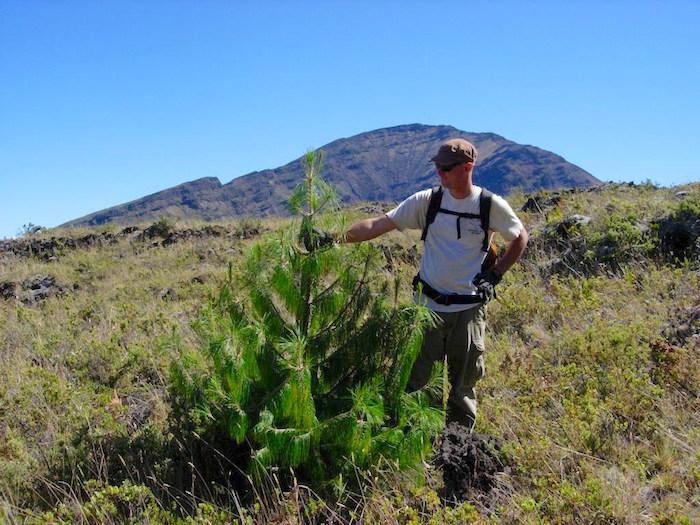
The Mexican weeping pine is one of the nonnative trees that need to be removed from Haleakala National Park/NPS
In case you find yourself in Hawai'i this weekend with some spare time, lend a hand to pull some invasive pine trees and other nonnative vegetation out of Haleakalā National Park.
The park and the Pacific Whale Foundation are searching for volunteers to help with the task this Saturday. Volunteers will physically remove young pine trees and other small invasive plants from the Summit District. Transportation, training, hand tools, gloves, and other equipment will be provided.
If you can help out, sign up by 11 a.m. on Friday, March 2, by contacting the Pacific Whale Foundation at (808) 249- 8811. Space is limited to 11 people.
Volunteers will be picked up at Ma`alaea Harbor at 7:30 a.m. or at the main parking lot of the Pukalani Community Center at 8:15 a.m. Participants will work for three hours, visit the summit, and be dropped off by 3 p.m. Volunteers should bring water, snacks, and sun protection; wear sturdy shoes and dress in layers; and be prepared to hike on uneven surfaces.
Volunteers will pull out very young pines, saw down small older pines, or pull out other small invasive plants, such as evening primrose. They'll work with park staff and a Pacific Whale Foundation certified naturalist.
Three non-native pine species (Monterey pine, Mexican weeping pine, and maritime pine) are highly invasive. They displace endemic and endangered species, change soil chemistry, and increase the potential for wildfire in habitats not adapted to fire. Park staff, partners, and volunteers periodically pull young pines to keep them from spreading throughout the park.
For a plant to cross the vast expanse of the Pacific Ocean and reach Hawai'i, then establish and reproduce, was a significant feat. Wind, wings and waves all played a role in the establishment of native plants that arrived and survived without human help.
Today, however, new plants arrive in Hawai'i every day at 2 million times the natural rate of introduction. There are over 400 established species of non-native plants in Haleakala National Park alone, most of which were introduced in the last century.
Invasive plants are species introduced to Hawai'i by people that pose a threat to fragile native ecosystems. Invasive plants outcompete natives by consuming water and nutrients, and growing and reproducing more quickly. They may be toxic to other plants (allelopathic), or shade them out by growing faster and taller. Many native species have lost evolutionary defenses, like plant toxins and rapid growth, that were unnecessary without predators and competitors on a brand-new island.





